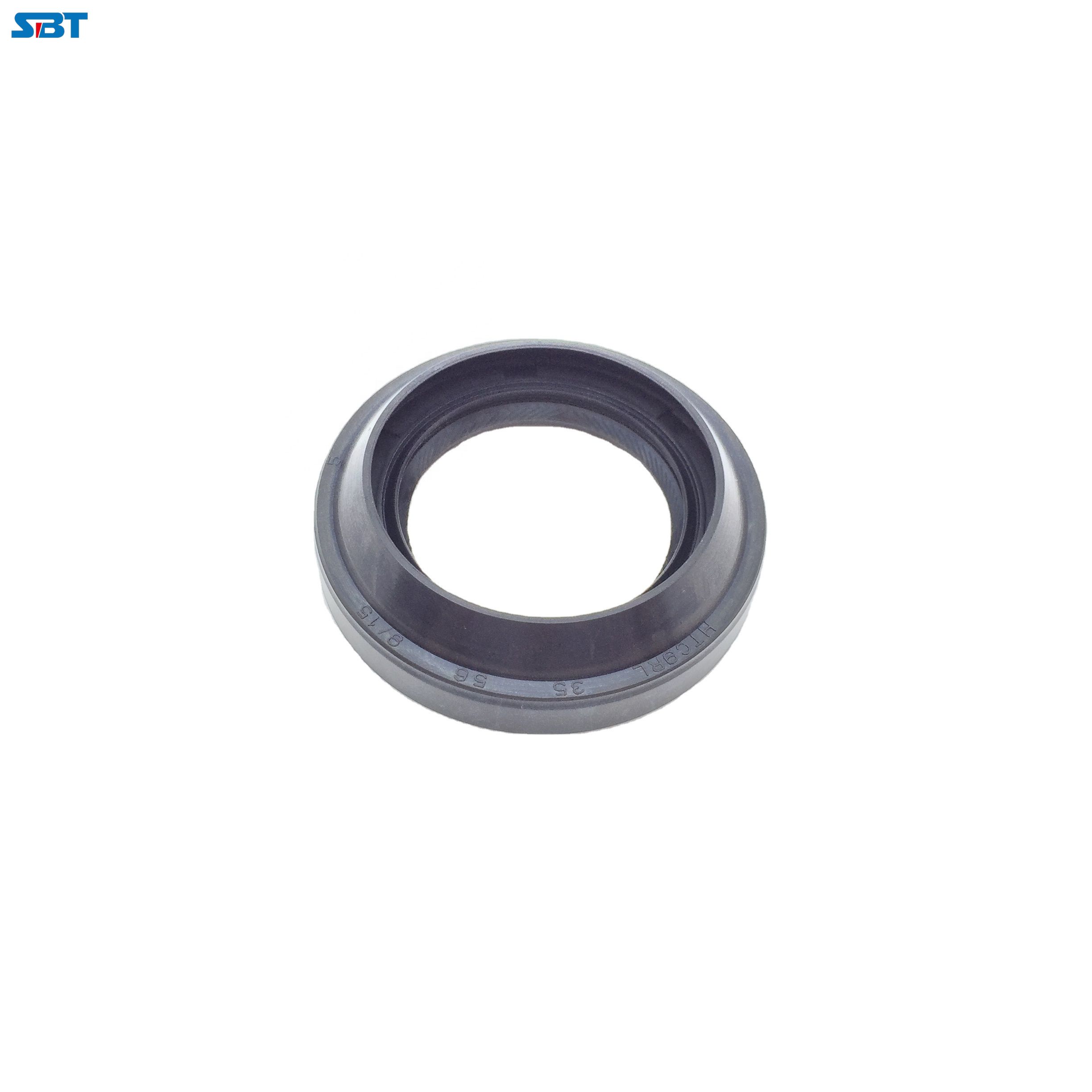How to correctly install oil seals to ensure the sealing effect of equipment
Mar. 24, 2025
Oil seals, also known as sealing rings and oil sealing rings, are devices used to prevent liquid or gas leakage. Oil seals are usually made of soft elastic materials, and their main function is to provide sealing between the rotating shaft or the periphery of the bearing and the fixed parts. Oil seals can prevent lubricating oil, liquid media or gas from leaking out of the sealing part of the machine, and can also prevent external dust and foreign matter from entering the machine to protect the normal operation of the machine.
Oil seal selection
Choosing a suitable oil seal is essential to ensure the normal operation of mechanical equipment and extend the life of the equipment. When selecting an oil seal, the following factors usually need to be considered:
Working environment: The working environment of the oil seal needs to be considered, including factors such as temperature, pressure, and medium. Different working environments may require oil seals of different materials or models to ensure the sealing effect. Use conditions: Understand the use conditions and operating requirements of the equipment, including parameters such as speed, vibration, and pressure, so as to select the appropriate oil seal type and specifications.
Lubricating oil: When selecting an oil seal, the type and nature of the lubricating oil need to be considered to ensure that the oil seal is compatible with the lubricating oil and ensure long-term sealing effect.
Sealing performance: Select the appropriate oil seal material and structure according to the required sealing performance (such as high temperature resistance, oil resistance, waterproof, etc.).
Installation and maintenance: Consider the difficulty of installation and maintenance of the oil seal, and select the oil seal type suitable for operation and maintenance.
Cost and performance requirements: Consider the balance between the cost and performance requirements of the oil seal, and select the oil seal that matches the performance and cost.

Common oil seal types include single lip oil seal, double lip oil seal, skeleton oil seal, rotary oil seal, etc., and make a choice according to the specific use requirements and working conditions. It is necessary to consult a professional engineer or oil seal supplier for more detailed oil seal selection suggestions, and ensure that the appropriate oil seal is selected to ensure the normal operation of the equipment.
Key steps in installation
The correct installation method of the oil seal is very critical. Here are some key steps:
Inspection and preparation: Make sure the surface of the oil seal is clean and free of contaminants, and apply a layer of key adhesive or lubricant between the oil seal barrel and the oil seal to increase the rolling effect and reduce friction.
Installation direction: The opening direction of the skeleton oil seal should face inward, facing the lubricant, and the side with the specifications should face outward.
Installed on the shaft or housing: The inner diameter of the oil seal is usually smaller than the shaft diameter, forming a certain amount of interference. To prevent damage to the oil seal lip, a conical shoulder or conical tooling should be used for assembly. When the shaft has threads, grooves, and splines, a special assembly tool is required to protect the oil seal lip.
Note: From receiving the oil seal to assembly, it must be kept clean. Before assembly, a machining inspection procedure must be completed to ensure that the dimensions of each part of the oil seal match the dimensions of the shaft and cavity. The end faces of the shaft and cavity should be smooth, the chamfers should not be damaged or burred, and the assembly parts must be clean. The shaft and seat hole should be machined with an assembly chamfer of 15 to 30 degrees, especially the inner corners, and there should be no slope. There should be no burrs, sand, iron filings, and other debris on the shaft installation part to prevent accidental damage to the oil seal lip.
Post-installation inspection: Check for leakage and determine whether it is installed correctly. Make sure that the oil seal is properly installed on the shaft and the lip is not damaged or twisted. The outer lip and inner lip should fit the shaft and equipment tightly.
Correct oil seal installation can not only ensure the sealing effect, but also extend the service life of the equipment and improve the operating efficiency. If you have any questions, it is recommended to consult a professional engineer or oil seal supplier for further guidance and advice.
27
0
0
All Comments (0)
Previous: Choosing the Right Ec Seal End Cover Seal
Next: what is hub oil used for
If you are interested in sending in a Guest Blogger Submission,welcome to write for us!


Comments